5,6-DIHYDROURACIL
Synonym(s):5,6-Dihydro-2,4-dihydroxypyrimidine
- CAS NO.:504-07-4
- Empirical Formula: C4H6N2O2
- Molecular Weight: 114.1
- MDL number: MFCD00006029
- EINECS: 207-982-1
- SAFETY DATA SHEET (SDS)
- Update Date: 2024-12-18 14:07:02
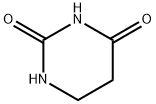
What is 5,6-DIHYDROURACIL?
Chemical properties
white to light beige crystalline powder
The Uses of 5,6-DIHYDROURACIL
5,6-Dihydrouracil acts as an intermediate in the catabolism of uracil.
The Uses of 5,6-DIHYDROURACIL
Impurity of Uracil.
The Uses of 5,6-DIHYDROURACIL
Dihydrouracil has been used as a standard for ureido group in the colorimentric assay of transfer ribonucleic acid (tRNA).
What are the applications of Application
5,6-Dihydrouracil is an intermediate in the catabolism of uracil
Definition
ChEBI: 5,6-dihydrouracil is a pyrimidine obtained by formal addition of hydrogen across the 5,6-position of uracil. It has a role as a metabolite, a human metabolite, an Escherichia coli metabolite and a mouse metabolite. It is functionally related to a uracil.
General Description
Dihydrouracil (DiHU) is a minor base found in transfer ribonucleic acid (tRNA). It is similar to uracil with the only exception that the C5-C6 bond is saturated. It crystallized in the monoclinic system with space group P21/C. Its crystalline structure has been analyzed. Its generation from L-cysteine and uracil via photochemical addition has been described.
Properties of 5,6-DIHYDROURACIL
| Melting point: | 279-281 °C (lit.) |
| Boiling point: | 213.59°C (rough estimate) |
| Density | 1.3565 (rough estimate) |
| refractive index | 1.4487 (estimate) |
| storage temp. | 2-8°C |
| solubility | Soluble in Sodium Hydroxide. |
| form | Solid |
| pka | 12.10±0.20(Predicted) |
| color | White to Light Beige |
| BRN | 112496 |
| InChI | InChI=1S/C4H6N2O2/c7-3-1-2-5-4(8)6-3/h1-2H2,(H2,5,6,7,8) |
| CAS DataBase Reference | 504-07-4(CAS DataBase Reference) |
| EPA Substance Registry System | 2,4(1H,3H)-Pyrimidinedione, dihydro- (504-07-4) |
Safety information for 5,6-DIHYDROURACIL
| Signal word | Warning |
| Pictogram(s) |
 Exclamation Mark Irritant GHS07 |
| GHS Hazard Statements |
H227:Flammable liquids H315:Skin corrosion/irritation H319:Serious eye damage/eye irritation |
| Precautionary Statement Codes |
P210:Keep away from heat/sparks/open flames/hot surfaces. — No smoking. P264:Wash hands thoroughly after handling. P264:Wash skin thouroughly after handling. P280:Wear protective gloves/protective clothing/eye protection/face protection. P302+P352:IF ON SKIN: wash with plenty of soap and water. P305+P351+P338:IF IN EYES: Rinse cautiously with water for several minutes. Remove contact lenses, if present and easy to do. Continuerinsing. P332+P313:IF SKIN irritation occurs: Get medical advice/attention. P337+P313:IF eye irritation persists: Get medical advice/attention. P370+P378:In case of fire: Use … for extinction. P403+P235:Store in a well-ventilated place. Keep cool. |
Computed Descriptors for 5,6-DIHYDROURACIL
| InChIKey | OIVLITBTBDPEFK-UHFFFAOYSA-N |
| SMILES | C1(=O)NCCC(=O)N1 |
5,6-DIHYDROURACIL manufacturer
ABINTIO BIOSCIENCES
New Products
(S)-3-Aminobutanenitrile hydrochloride 4-Methylphenylacetic acid N-Boc-D-alaninol N-BOC-D/L-ALANINOL Tert-butyl bis(2-chloroethyl)carbamate N-octanoyl benzotriazole 3-Morpholino-1-(4-nitrophenyl)-5,6-dihydropyridin- 2(1H)-one Furan-2,5-Dicarboxylic Acid S-2-CHLORO PROPIONIC ACID ETHYL ISOCYANOACETATE 2-Bromo-1,3-Bis(Dimethylamino)Trimethinium Hexafluorophosphate 4-IODO BENZOIC ACID 3-NITRO-2-METHYL ANILINE 1-(2,4-DICHLOROPHENYL) ETHANAMINE (2-Hydroxyphenyl)acetonitrile 4-Bromopyrazole 5,6-Dimethoxyindanone 2-(Cyanocyclohexyl)acetic acid 4-methoxy-3,5-dinitropyridine 1-(4-(aminomethyl)benzyl)urea hydrochloride 2-aminopropyl benzoate hydrochloride diethyl 2-(2-((tertbutoxycarbonyl)amino) ethyl)malonate tert-butyl 4- (ureidomethyl)benzylcarbamate Ethyl-2-chloro((4-methoxyphenyl)hydrazono)acetateRelated products of tetrahydrofuran
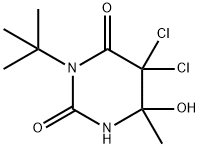
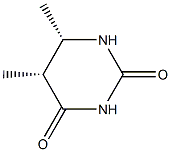

![DIHYDROURACIL, [2-14C]-](https://img.chemicalbook.in/StructureFile/ChemBookStructure4/GIF/CB1172324.gif)

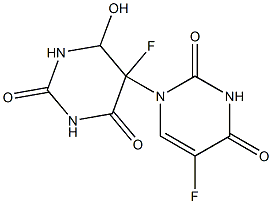
![DIHYDROURACIL, [6-14C]-](https://img.chemicalbook.in/StructureFile/ChemBookStructure4/GIF/CB5167096.gif)
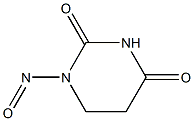
You may like
-
 504-07-4 5,6-Dihydrouracil 98%View Details
504-07-4 5,6-Dihydrouracil 98%View Details
504-07-4 -
 504-07-4 98%View Details
504-07-4 98%View Details
504-07-4 -
 5,6-Dihydrouracil 504-07-4 98%View Details
5,6-Dihydrouracil 504-07-4 98%View Details
504-07-4 -
 5,6-Dihydrouracil 99%View Details
5,6-Dihydrouracil 99%View Details
504-07-4 -
 5,6-Dihydrouracil CAS 504-07-4View Details
5,6-Dihydrouracil CAS 504-07-4View Details
504-07-4 -
 Dihydrouracil CAS 504-07-4View Details
Dihydrouracil CAS 504-07-4View Details
504-07-4 -
 14714-50-2 (2-Hydroxyphenyl)acetonitrile 98+View Details
14714-50-2 (2-Hydroxyphenyl)acetonitrile 98+View Details
14714-50-2 -
 118753-70-1 98+View Details
118753-70-1 98+View Details
118753-70-1